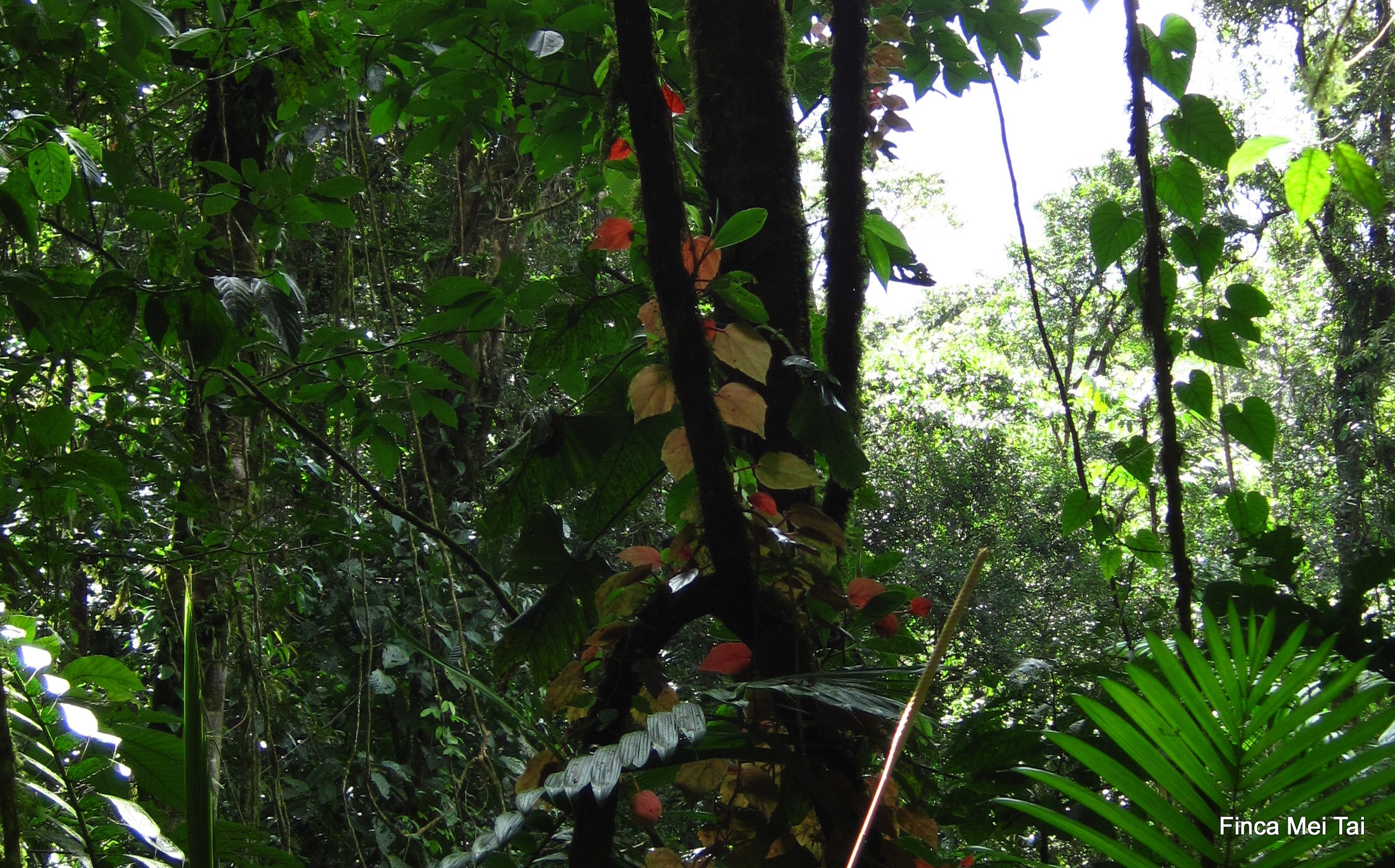


Because we explore
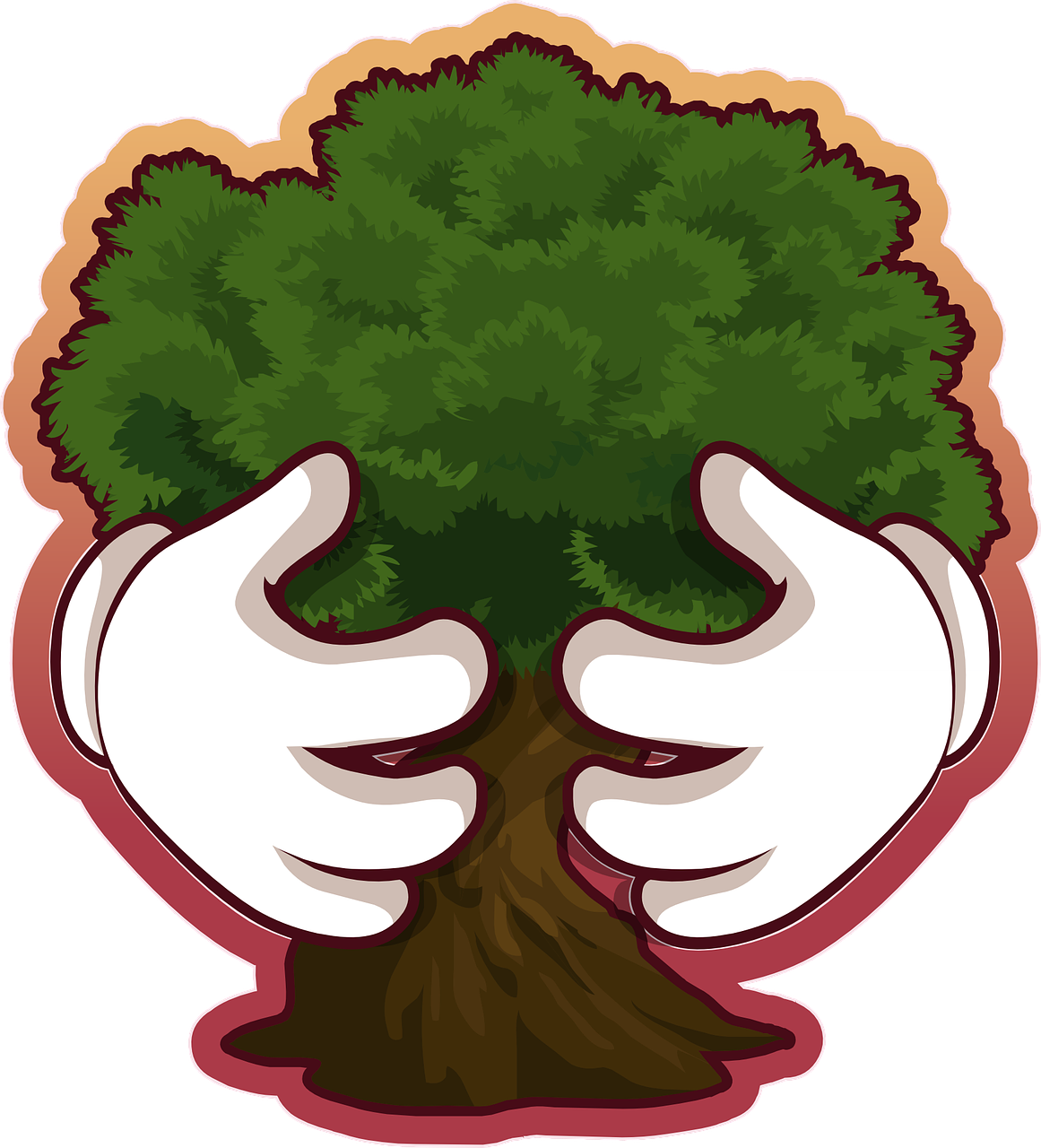
Because we care

Because we hike
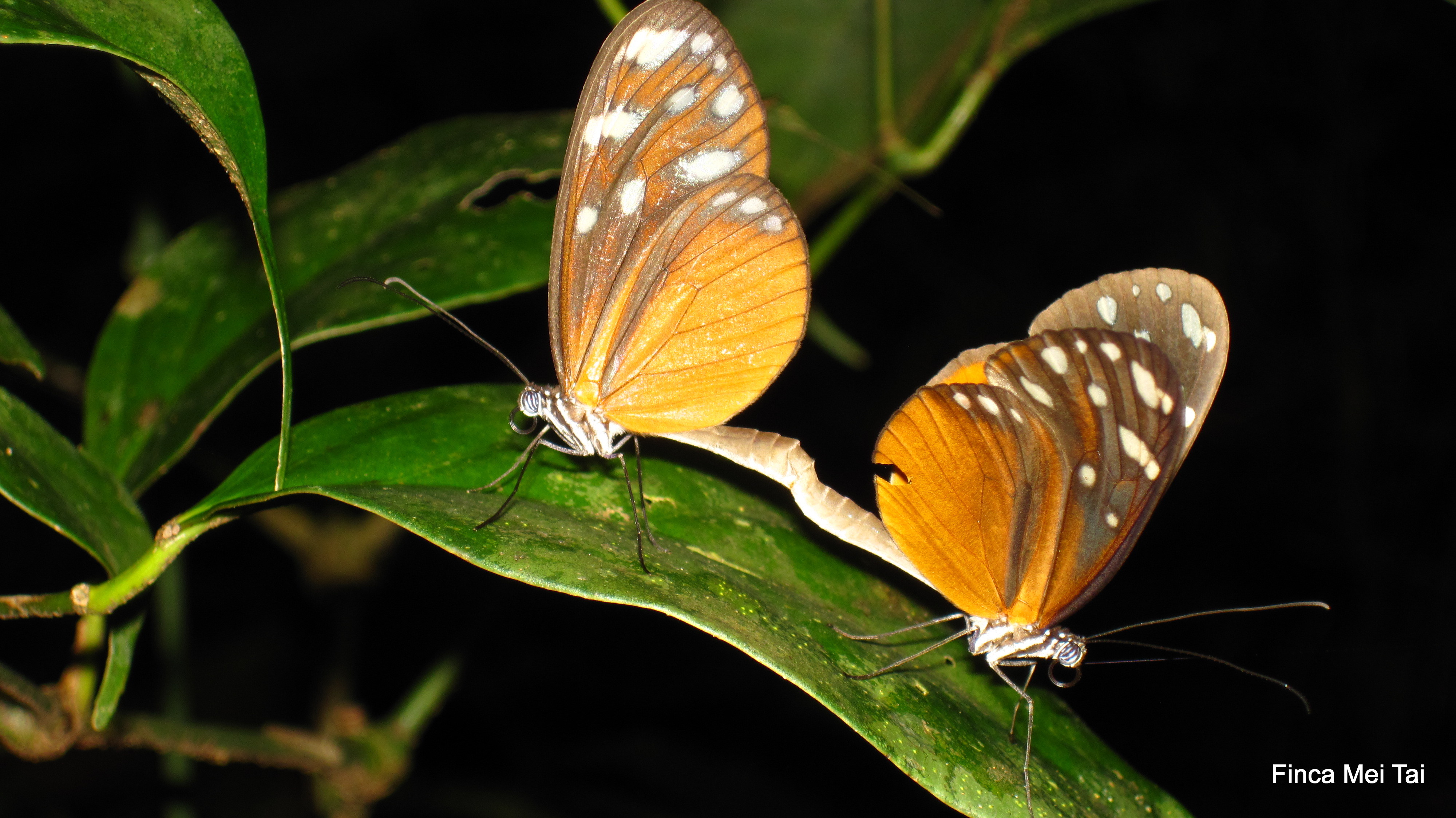
A finca is a farm whose area lies between 5 and 500 hectares. Less than 5 Ha, it is called a Quinta, over 500 Ha, it is called an Hacienda and, in between, a Finca.
Our finca is mainly covered by forest and that's the way we love it. We still have 14 Ha of meadows to develop farming activities though. We believe that it's more than enough to create a well balanced project, combining organic unextensive agriculture and reasonable livestock. As a consequence, we did plant 2.000 coco bean trees, hundreds of fruit trees and vegetables - mixing them to avoid soil depletion (and we did not forget to plant flowers because aesthetic is part of our project as well).
As for livestock, 15 steers, 3 horses and a dozen ducks are running around, nearly free...
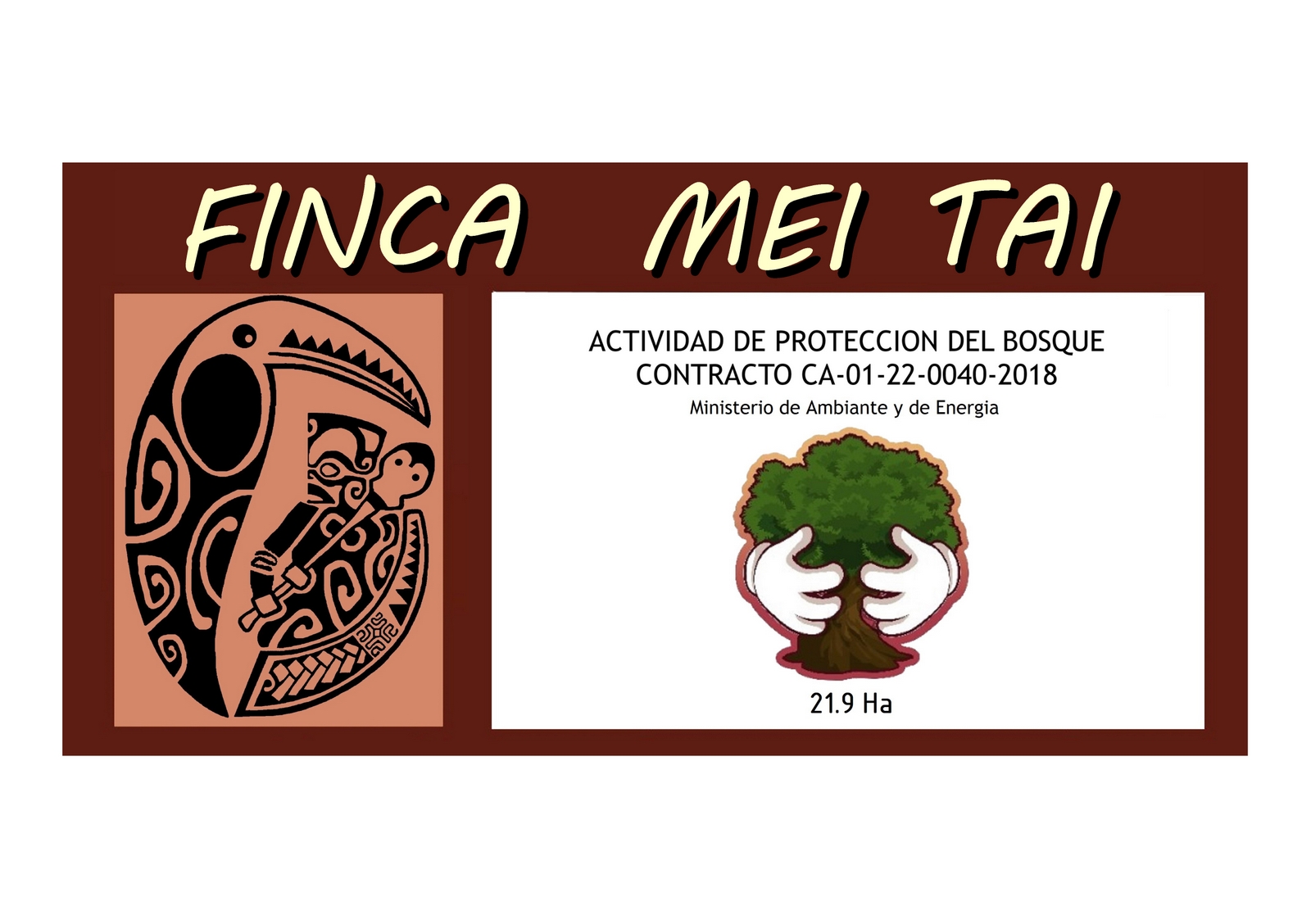
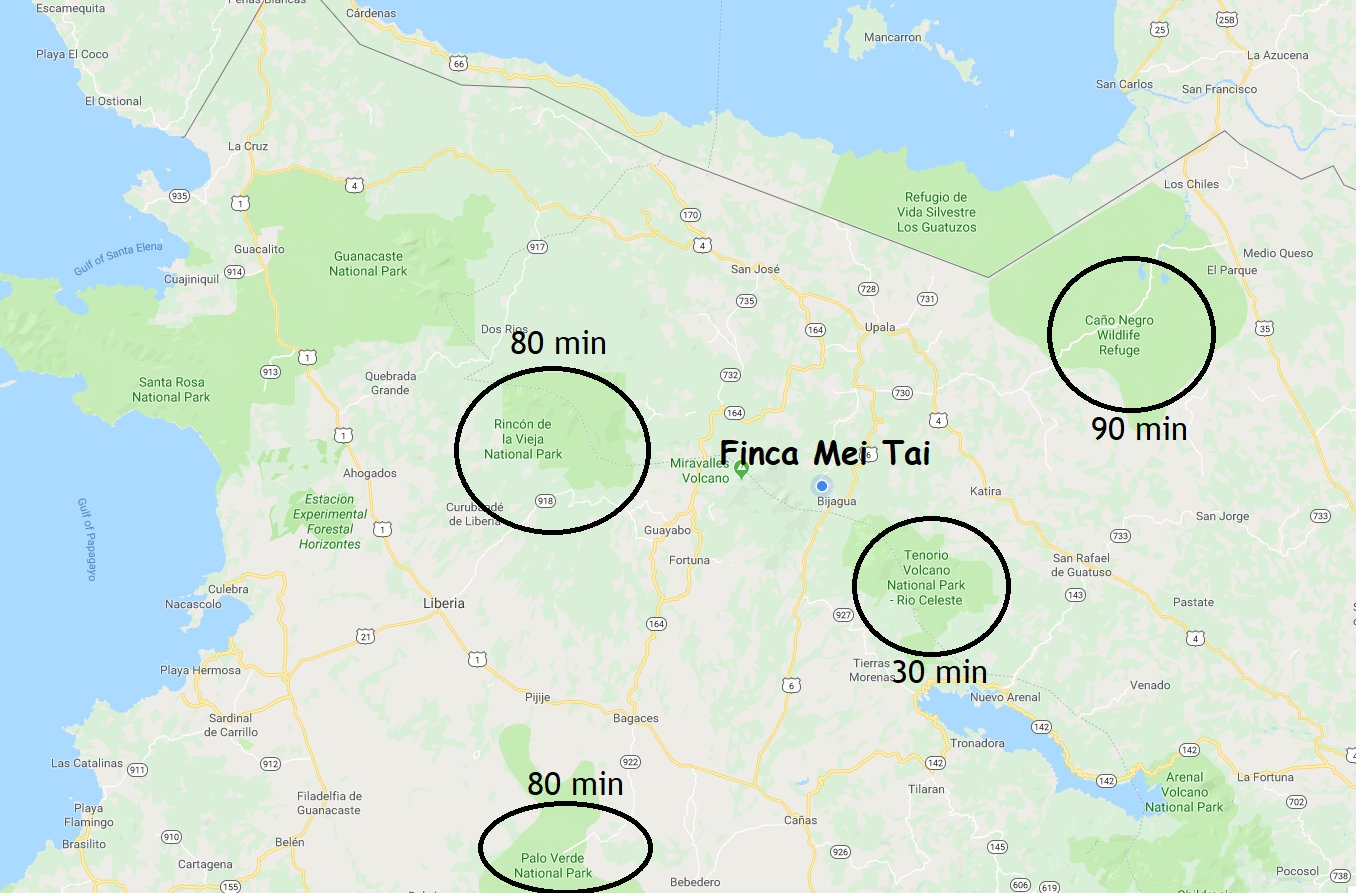
.JPG)
The forest
That's the rainforest
.JPG)
The hummingbird
There are many birds around here
.JPG)
The forest
A touch of light
.JPG)
The Miravalles Volcano
With its cloudy hat
.JPG)
The waterfall
OK, it's not the Niagara falls, but it's much quieter
.JPG)
The trail
Quite steep
.JPG)
The Tenorio Volcano
That's where the Rio Celeste flows
.JPG)
The creek
Gently flowing
.JPG)
The tree
Cécile looks very small
.JPG)
The forest
Along the crest
.JPG)
The forest
And its vines
.JPG)
The forest
And its palmtrees
| Family | Latin | Français | English | German | ||||
| Cracidae | Penelope purpurascens | Pénélope panachée | Crested Guan | Rostbauchguan | ||||
| Ardeidae | Tigrisoma mexicanum | Onoré du Mexique | Bare-throated Tiger Heron | Nacktkehlreiher | ||||
| Ardeidae | Bubulcus ibis | Héron garde-boeufs | Western Cattle Egret | Kuhreiher | ||||
| Ardeidae | Ardea alba | Grande Aigrette | Great Egret | Silberreiher | ||||
| Cathartidae | Cathartes aura | Urubu à tête rouge | Turkey Vulture | Truthahngeier | ||||
| Cathartidae | Coragyps atratus | Urubu noir | Black Vulture | Rabengeier | ||||
| Accipitridae | Ictinia plumbea | Milan bleuâtre | Plumbeous Kite | Schwebeweih | ||||
| Accipitridae | Pseudastur albicollis | Buse blanche | White Hawk | Schneebussard | ||||
| Accipitridae | Buteo platypterus | Petite Buse | Broad-winged Hawk | Breitflügelbussard | ||||
| Accipitridae | Buteo nitidus | Buse cendrée | Grey-lined Hawk | |||||
| Falconidae | Herpetotheres cachinnans | Macagua rieur | Laughing Falcon | Lachfalke | ||||
| Falconidae | Caracara cheriway | Caracara du Nord | Northern Crested Caracara | Schopfkarakara | ||||
| Columbidae | Columbina inca | Colombe inca | Inca Dove | Aztekentäubchen | ||||
| Columbidae | Columbina passerina | Colombe à queue noire | Common Ground Dove | Sperlingstäubchen | ||||
| Columbidae | Patagioenas flavirostris | Pigeon à bec rouge | Red-billed Pigeon | Rotschnabeltaube | ||||
| Columbidae | Columbina talpacoti | Colombe rousse | Ruddy Ground Dove | Rosttäubchen | ||||
| Columbidae | Leptotila verreauxi | Colombe de Verreaux | White-tipped Dove | Blauringtaube | ||||
| Columbidae | Zenaida asiatica | Tourterelle à ailes blanches | White-winged Dove | Weißflügeltaube | ||||
| Psittacidae | Aratinga nana | Conure a gorge olive | olive throated parakeet | Aztekensittich | ||||
| Psittacidae | Amazona autumnalis | Amazone à lores rouges | Red-lored Amazon | Gelbwangenamazone | ||||
| Psittacidae | Amazona albifrons | Amazone à front blanc | White-fronted Amazon | Weißstirnamazone | ||||
| Psittacidae | Brotogeris jugularis | Toui à menton d'or | Orange-chinned Parakeet | Tovisittich | ||||
| Cuculidae | Crotophaga sulcirostris | Ani à bec cannelé | Groove-billed Ani | Riefenschnabel-Ani | ||||
| Apodidae | Streptoprocne zonaris | Martinet à collier blanc | White-collared Swift | Halsbandsegler | ||||
| Trochilidae | Glaucis aeneus | Ermite bronzé | Bronzy Hermit | Kupferschattenkolibri | ||||
| Trochilidae | Phaethornis striigularis | Ermite à gorge rayée | Stripe-throated Hermit | Streifenkehl-Schattenkolibri | ||||
| Trochilidae | Amazilia tzacatl | Ariane à ventre gris | Rufous-tailed Hummingbird | Braunschwanzamazilie | ||||
| Trochilidae | Amazilia saucerottei | Ariane de Sophie | Steely-vented Hummingbird | Stahlgrüne Amazilie | ||||
| Trochilidae | Heliothryx barroti | Colibri féérique | Purple-crowned Fairy | Purpurkron-Schmuckkolibri | ||||
| Trochilidae | Phaeochroa cuvierii | Colibri de Cuvier | Scaly-breasted Hummingbird | Schuppenbrustkolibri | ||||
| Momotidae | Baryphthengus martii | Motmot roux | Rufous Motmot | Zimtbrustmotmot | ||||
| Momotidae | Electron platyrhynchum | Motmot à bec large | Broad-billed Motmot | Plattschnabelmotmot | ||||
| Alcenidae | Chloroceryle americana | Martin-pêcheur vert | Green Kingfisher | Grünfischer | ||||
| Alcenidae | Chloroceryle amazona | Martin-pêcheur d'Amazonie | Amazon Kingfisher | Amazonasfischer | ||||
| Galbulidae | Galbula ruficauda | Jacamar à queue rousse | Rufous-tailed Jacamar | Rotschwanz-Glanzvogel | ||||
| Ramphastidae | Ramphastos sulfuratus | Toucan à carène | Keel-billed Toucan | Fischertukan | ||||
| Ramphastidae | Ramphastos ambiguus | Toucan de Swainson | Black-mandibled Toucan | Swainson-Tukan | ||||
| Picidae | Melanerpes pucherani | Pic de Pucheran | Black-cheeked Woodpecker | Schläfenfleckspecht | ||||
| Picidae | Melanerpes hoffmannii | Pic de Hoffmann | Hoffmann's Woodpecker | Hoffmannspecht | ||||
| Furnariidae | Glyphorynchus spirurus | Grimpar bec-en-coin | Wedge-billed Woodcreeper | Keilschnabel-Baumsteiger | ||||
| Furnariidae | Lepidocolaptes souleyetii | Grimpar de Souleyet | Streak-headed Woodcreeper | Lanzettstrichel-Baumsteiger | ||||
| Thamnophilidae | Myrmeciza exsul | Alapi à dos roux | Chestnut-backed Antbird | Braunrücken-Ameisenvogel | ||||
| Tyrannidae | Zimmerius vilissimus | Tyranneau gobemoucheron | Paltry Tyrannulet | Weißstreif-Kleintyrann | ||||
| Tyrannidae | Elaenia flavogaster | Élénie à ventre jaune | Yellow-bellied Elaenia | Gelbbauch-Olivtyrann | ||||
| Tyrannidae | Todirostrum cinereum | Todirostre familier | Common Tody-Flycatcher | Graugelb-Todityrann | ||||
| Tyrannidae | Lophotriccus pileatus | Microtyran chevelu | Scale-crested Pygmy Tyrant | Rot-Schuppenkopftyrann | ||||
| Tyrannidae | Contopus cinereus | Moucherolle cendré | Tropical Pewee | Südlicher Waldschnäppertyrann | ||||
| Tyrannidae | Myiozetetes similis | Tyran sociable | Social Flycatcher | Rotscheitel-Maskentyrann | ||||
| Tyrannidae | Empidonax minimus | Moucherolle tchébec | Least Flycatcher | Zwergschnäppertyrann | ||||
| Tyrannidae | Myiarchus tuberculifer | Tyran olivâtre | Dusky-capped Flycatcher | Schwarzkappen-Schopftyrann | ||||
| Tyrannidae | Tyrannus melancholicus | Tyran mélancolique | Tropical Kingbird | Trauerkönigstyrann | ||||
| Tyrannidae | Pitangus sulphuratus | Tyran quiquivi | Great Kiskadee | Schwefelmaskentyrann | ||||
| Turdidae | Turdus grayi* | Merle fauve | Clay-colored Thrush | Gilbdrossel | ||||
| Troglodytae | Cantorchilus nigricapillus | Troglodyte à calotte noire | Bay Wren | Kastanienzaunkönig | ||||
| Troglodytae | Troglodytes aedon | Troglodyte familier | House Wren | Hauszaunkönig | ||||
| Troglodytae | Henicorhina leucosticta | Troglodyte à poitrine blanche | White-breasted Wood Wren | Waldzaunkönig | ||||
| Troglodytae | Cantorchilus modestus | Troglodyte modeste | Plain Wren | Cabanis-Zaunkönig | ||||
| Vireonidae | Hylophilus decurtatus | Viréon menu | Lesser Greenlet | Graukappenvireo | ||||
| Parulidae | Leiothlypis peregrina | Paruline obscure | Tennessee Warbler | Brauenwaldsänger | ||||
| Parulidae | Setophaga pensylvanica | Paruline à flancs marron | Chestnut-sided Warbler | Gelbscheitel-Waldsänger | ||||
| Parulidae | Setophaga petechia | Paruline jaune | Yellow Warbler | Goldwaldsänger | ||||
| Thraupidae | Ramphocelus passerinii | Tangara à croupion rouge | Passerini's Tanager | Passerinitangare | ||||
| Thraupidae | Thraupis palmarum | Abttangare (Thraupis abbas) | Palm Tanager | Palmentangare | ||||
| Thraupidae | Thraupis episcopus | Tangara évêque | Blue-grey Tanager | Bischofstangare | ||||
| Coerebidae | Coereba flaveola | Sucrier à ventre jaune | Bananaquit | Zuckervogel | ||||
| Emberizidae | Sporophila corvina | Sphorophile variable | Variable Seedeater | Mexico Wechselpfäffchen | ||||
| Emberizidae | Sporophila torqueola | Sphorophile a col blanc | White-collared Seedeater | Braunbürzelpfäffchen | ||||
| Emberizidae | Tiaris olivaceus | Sporiphile Grand- Chanteur | Yellow-faced Grassquit | Goldbraue | ||||
| Thraupidae | Arremon aurantiirostris | Tohi à bec orange | Orange-billed Sparrow | Goldschnabel-Ruderammer | ||||
| Cardinalidae | Saltator maximus | Saltaror de grand bois | Buff-throated Saltator | Buntkehlsaltator | ||||
| Cardinalidae | Saltator coerulescens | Saltator gris | Greyish Saltator | Grausaltator | ||||
| Cardinalidae | Cyanocompsa cyanoides | Évêque bleu-noir | Blue-black Grosbeak | Stahlbischof | ||||
| Ictiridae | Psarocolius montezuma | Cassique de Montezuma | Montezuma Oropendola | Montezumastirnvogel | ||||
| Ictiridae | Icterus galbula | Oriole du Nord | Baltimore Oriole | Baltimoretrupial | ||||
| Fringilidae | Euphonia hirundinacea | Organiste à gorge jaune | Yellow-throated Euphonia | Schwalbenorganist | ||||
| Fringilidae | Euphonia gouldi | Organiste olive | Olive-backed Euphonia | Olivrückenorganist | ||||
| * National Bird of Costa Rica | ||||||||
Although Bijagua used to be a historical area for coco beans plantation, it seems the local weather is not adequate for this type of culture. However, we wanted to give it a try. The 2.000 trees we planted on a very steap meadow are now struggling their way through. We had our first fruit in 2016. Then we lost all our plants in the flooding caused by the hurricane Otto. Then, because we are stuborn, we replanted 1200 trees in a better protected area of the finca. Eventually, we hope to produce a bit of our own chocolate. After all, we were Belgians once...
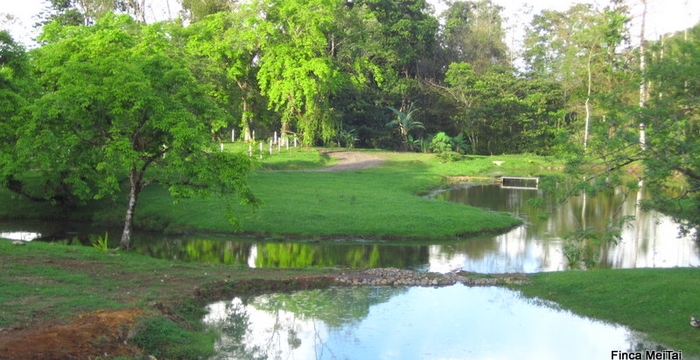
The finca was once covered with meadows dedicated to milking cows. The previous owner decided to let the forest regrow on the steapest parts. We decided to carry on the process by planting 200 trees in such a way that the forest would extend to our house. We also built a few dams so that flowing water from the creeks would create ponds. The idea was to attract wildlife out of the forest.
That is why we planted a number of fruit trees. Moreover, with the help of a local association whose self-assigned mission is to repopulate the country with endemic plants, we planted rare or endangered species to take part to the protection of nature here in Costa Rica. Hence, trees such as Cocobolo (Balbergia retusa), Ron Ron (Astronium graveolens ), Corteza Amarillo (Tabebuia ochracea), Cristobal (Platymiscium pinnatum), Almendro de Montaña (Dipteryx panamensis) or Caoba (Swietenia macrophylla) are gently growing. Of course, we'll be long dead before they reach their maturity but that does not matter.
The fauna
With 100 acres lying in between 2 volcanos, no wonder that we enjoy so much wild life... Here are a few specimens
All pictures taken by us in the finca !
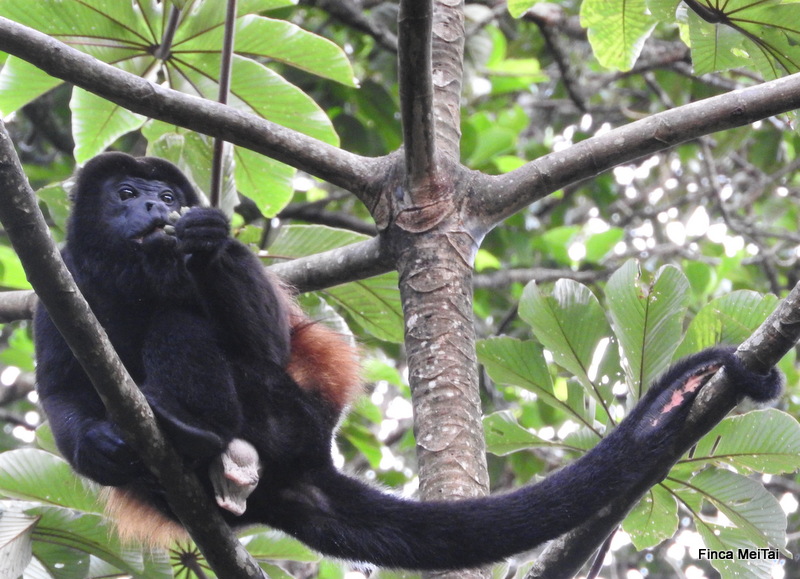
Alouatta palliata
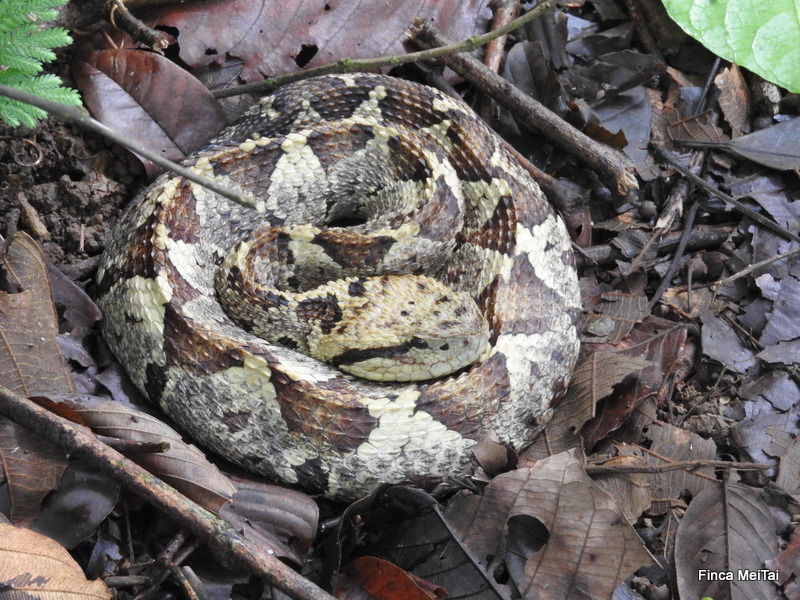
Atropoides nummifer
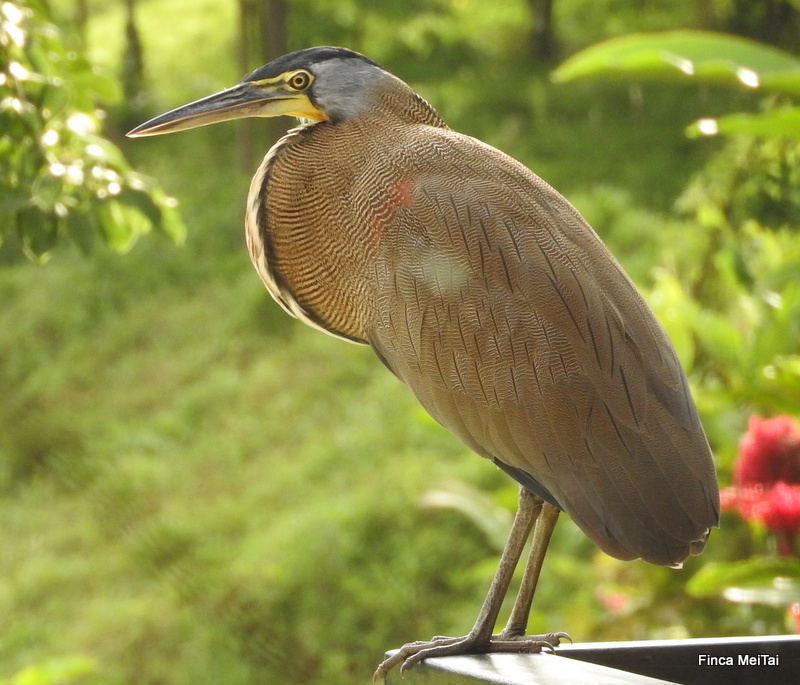
Tigrisoma mexicanum
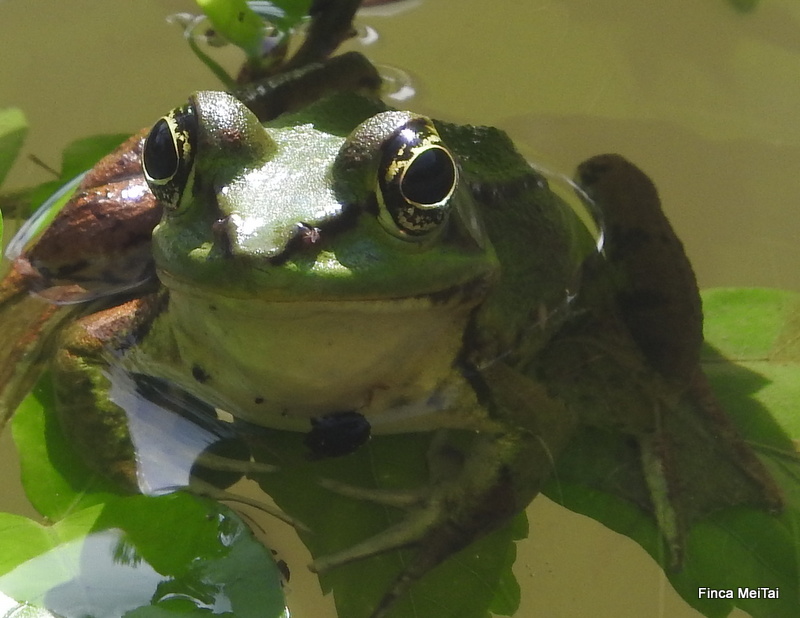
Smilisca phaeota
The flora
Well, Costa Rica being what it is, we have a huge variety of trees, plants and flowers.
One of the first project we started as we acquired the land was to plant hundreds of fine wood and fruit trees as well as 2.000 coco bean trees.
We are developing the garden so that we could not only enjoy a colorful landscape but also take profit of an exceptional soil.
Applying basic principles of permaculture, we try to work with the nature and not against it. Our garden is a mix of fruit trees, medicinal plants, vegetables and flowers.
All pictures taken by us in the finca !
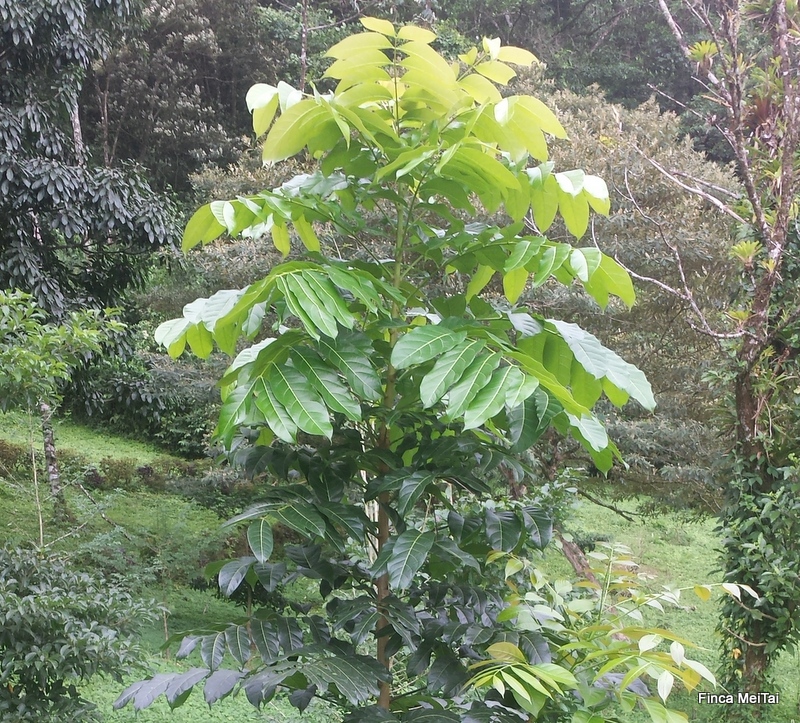
Caoba - Swietenia Macrophylla
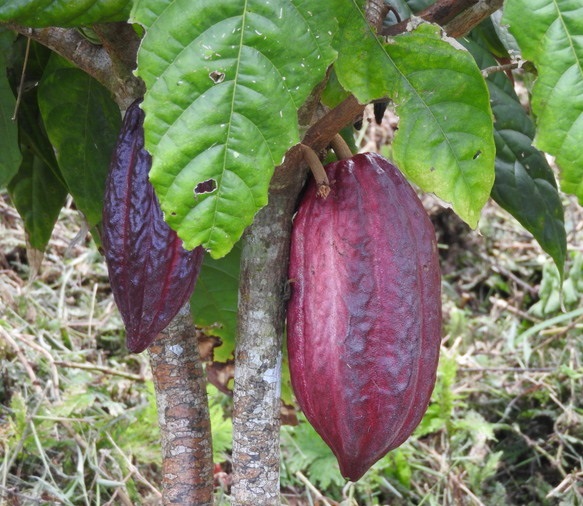
2 Ha
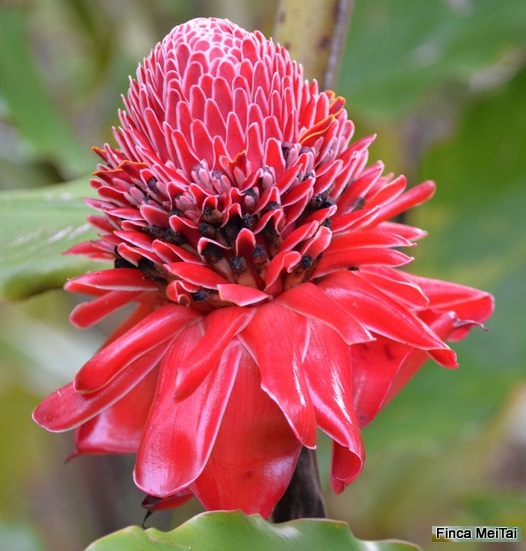
Heliconias
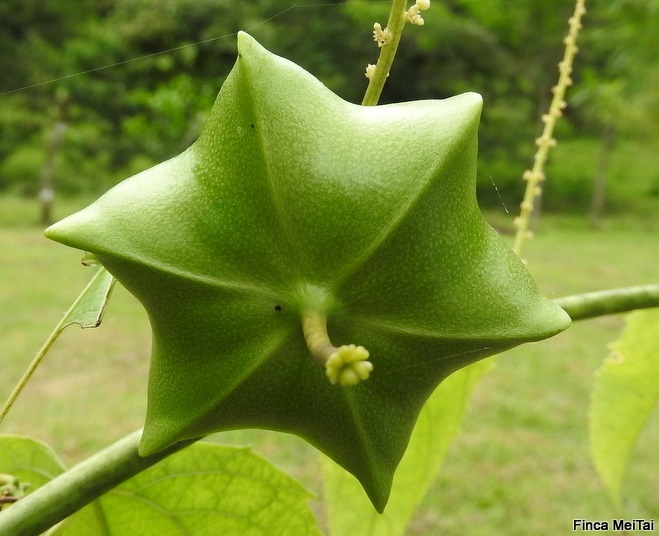
Sacha Inchi